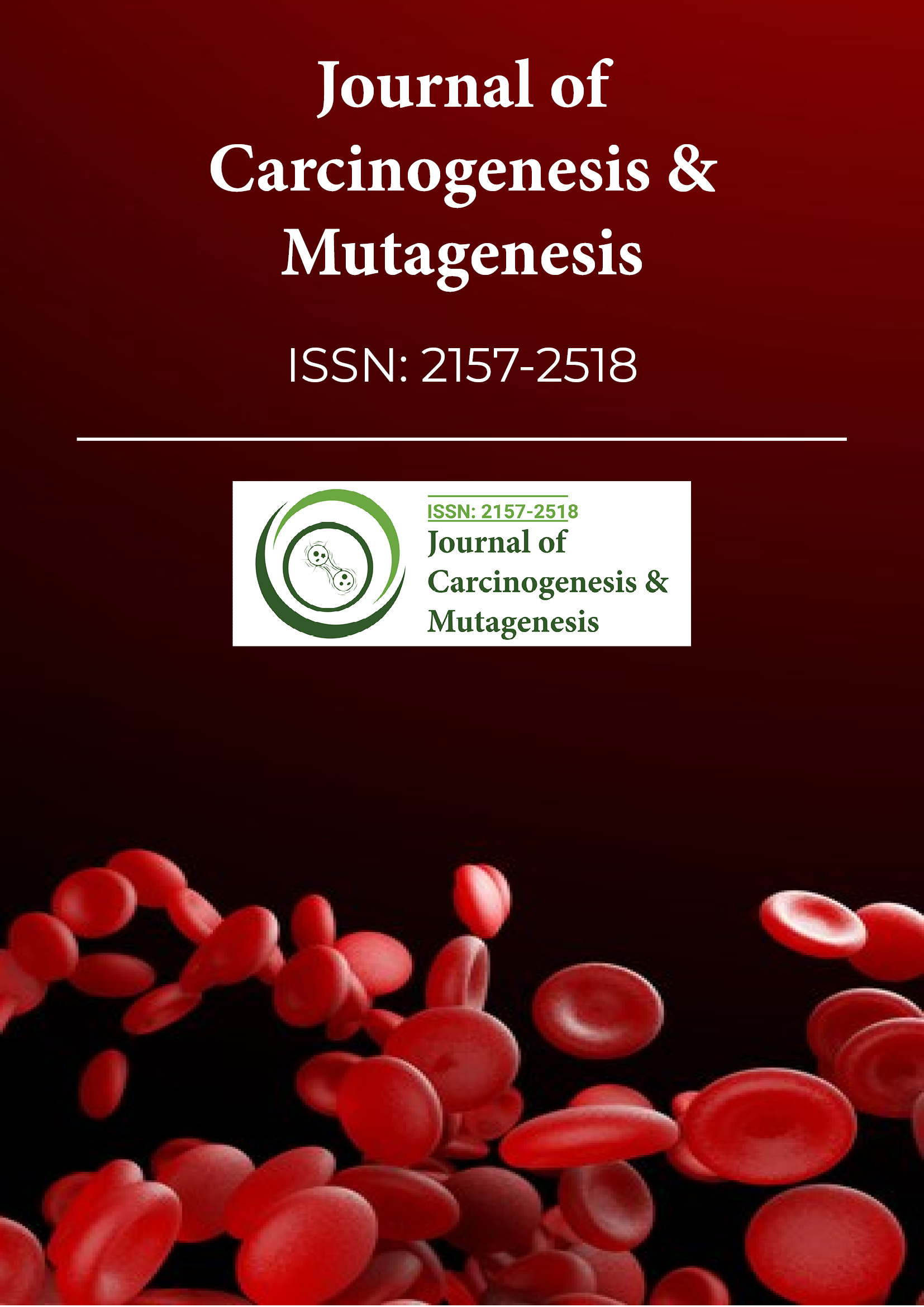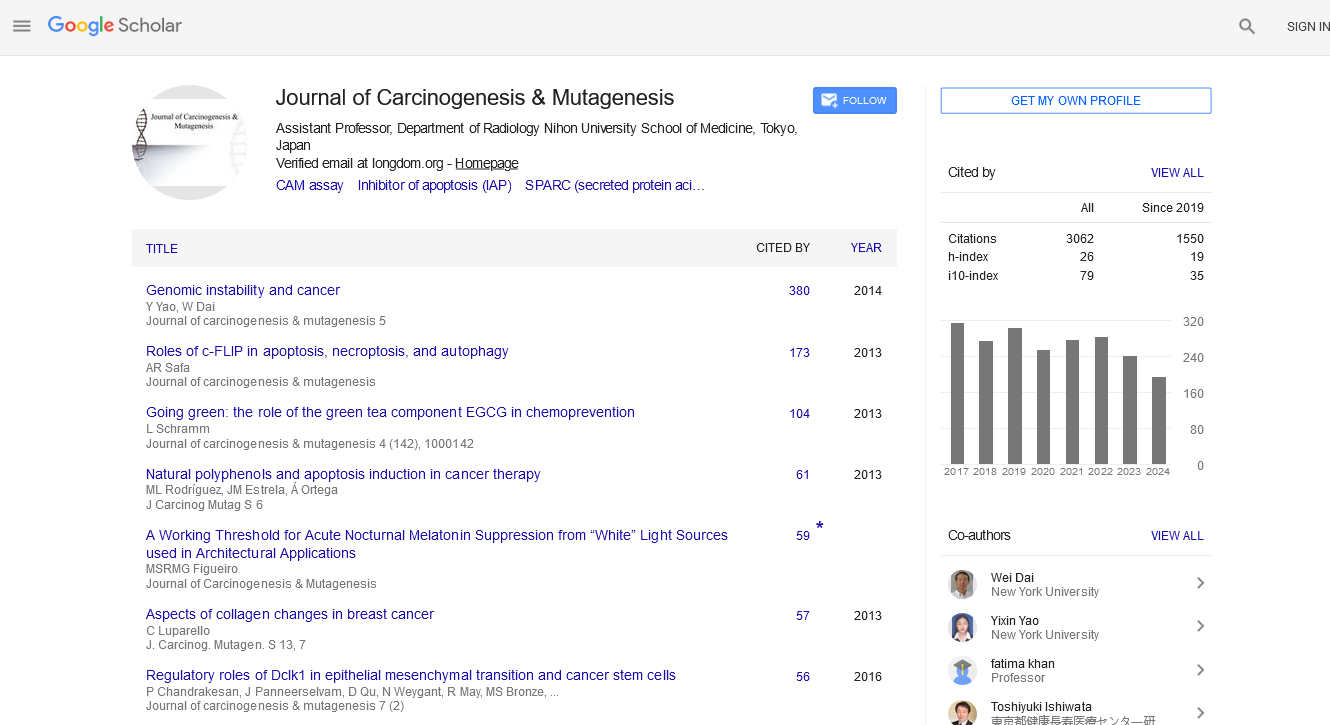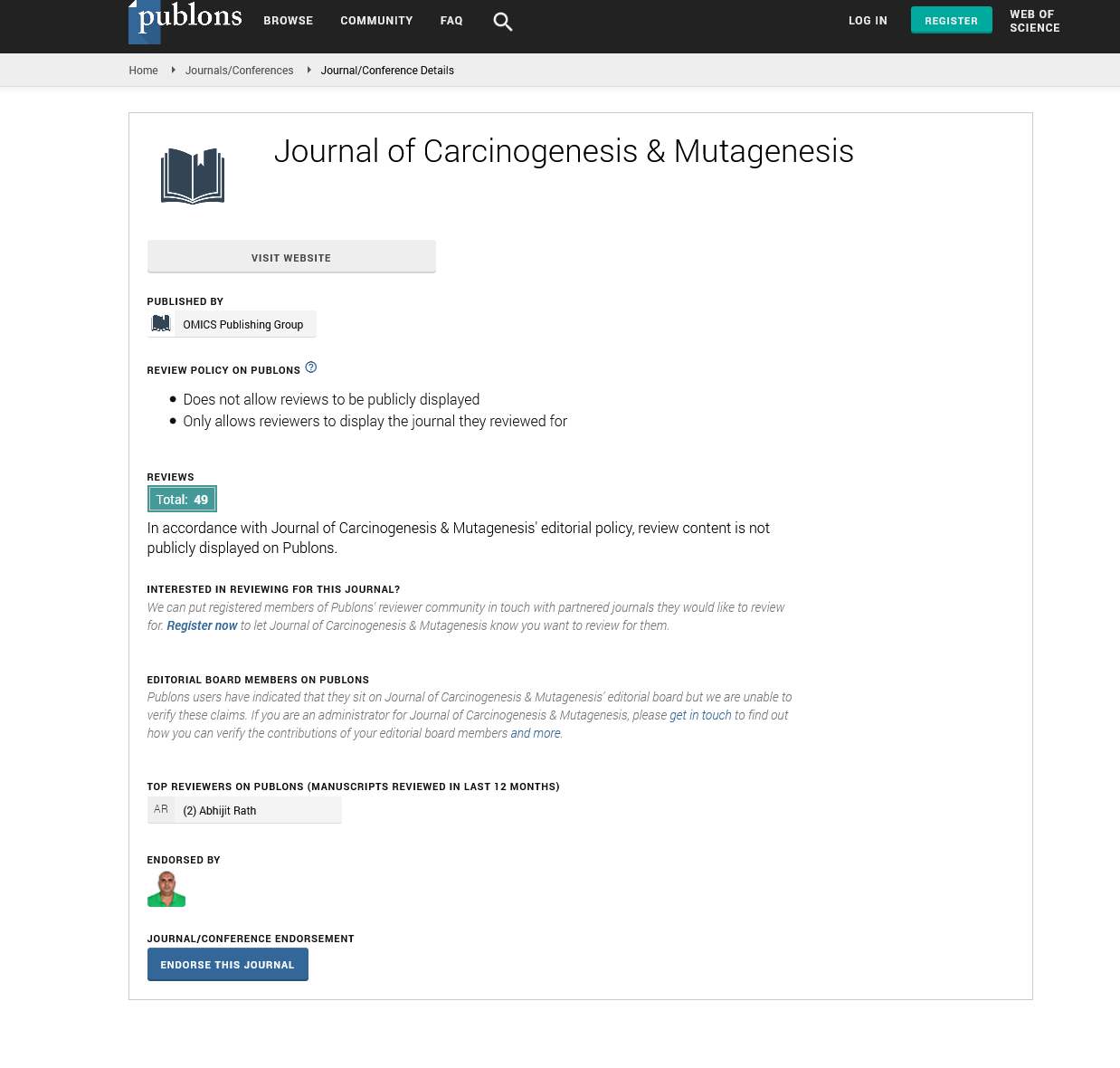Indexed In
- Open J Gate
- Genamics JournalSeek
- JournalTOCs
- Ulrich's Periodicals Directory
- RefSeek
- Hamdard University
- EBSCO A-Z
- OCLC- WorldCat
- Publons
- Geneva Foundation for Medical Education and Research
- Euro Pub
- Google Scholar
Useful Links
Share This Page
Journal Flyer

Open Access Journals
- Agri and Aquaculture
- Biochemistry
- Bioinformatics & Systems Biology
- Business & Management
- Chemistry
- Clinical Sciences
- Engineering
- Food & Nutrition
- General Science
- Genetics & Molecular Biology
- Immunology & Microbiology
- Medical Sciences
- Neuroscience & Psychology
- Nursing & Health Care
- Pharmaceutical Sciences
Commentary - (2023) Volume 0, Issue 0
Enhancing the Immune System's Potential of Hepatocellular Carcinoma Treated with Adoptive Cell Therapy
Keyur Patel*Received: 25-Oct-2023, Manuscript No. JCM-23-24237; Editor assigned: 27-Oct-2023, Pre QC No. JCM-23-24237; Reviewed: 13-Nov-2023, QC No. JCM-23-24237; Revised: 20-Nov-2023, Manuscript No. JCM-23-24237; Published: 28-Nov-2023, DOI: 10.35248/2157-2518.23.S40.003
Description
Hepatocellular Carcinoma (HCC), the most common form of liver cancer, poses a significant global health challenge with limited treatment options, especially in advanced stages. In recent years, there has been a growing interest in resolve the body's immune system to combat cancer, and Adoptive Cell Therapy (ACT) has emerged as a potentail avenue in the branch of HCC treatment. This article explores the principles behind adoptive cell therapy, its application in hepatocellular carcinoma, and the potential it holds for transforming the landscape of liver cancer management.
Adoptive Cell Therapy is a form of immunotherapy that involves the isolation and manipulation of a patient's own immune cells to enhance their ability to recognize and attack cancer cells. The approach primarily relies on T cells, a type of white blood cell, which plays a significant role in the immune response against cancer.
The process begins with the extraction of T cells from the patient's blood or tumor tissue. These cells are then genetically modified or stimulated ex vivo to enhance their anti-tumor activity. The modified T cells are subsequently expanded in large quantities before being infused back into the patient. Once reintroduced into the body, these engineered T cells can recognize and eliminate cancer cells, offering a targeted and personalized approach to cancer treatment.
Hepatocellular Carcinoma often presents as a challenging disease to treat, especially in advanced stages where traditional therapies may have limited efficacy. The liver's complex immunological environment further complicates treatment strategies. Adoptive Cell Therapy, with its focus on empowering the patient's immune system, holds great potential in addressing these challenges.
One of the key advantages of ACT is its potential for specificity. Engineered T cells can be designed to target specific antigens expressed by liver cancer cells, minimizing damage to healthy tissues. This targeted approach is particularly significant in HCC, where preserving the function of the liver is most important.
Tumor-Infiltrating Lymphocytes (TILs) are T cells that have infiltrated the tumor microenvironment. In ACT, TILs can be isolated from surgically resected HCC specimens, expanded in the laboratory, and then infused back into the patient. This approach capitalizes on the T cells' natural ability to recognize and attack cancer cells within the tumor.
Chimeric Antigen Receptor T-Cell therapy involves genetic modification of T cells to express a synthetic receptor known as a chimeric antigen receptor. This receptor is designed to recognize specific antigens on the surface of cancer cells. CAR-T therapy has shown remarkable success in hematologic malignancies and is now being explored for its potential in solid tumors, including HCC.
T-Cell Receptor (TCR) therapy involves modifying T cells to express receptors that can recognize specific antigens presented by cancer cells. This approach allows for a broader range of target antigens compared to CAR-T therapy.
The application of Adoptive Cell Therapy in hepatocellular carcinoma is an active area of research, with several clinical trials underway to assess its safety and efficacy. Early-phase trials have shown potential results, demonstrating the feasibility and safety of ACT in HCC patients.
One notable challenge in HCC is the immunosuppressive nature of the tumor microenvironment. The liver's unique immune system often creates an environment that hinders the activation and function of immune cells. Researchers are actively investigating strategies to overcome these immunosuppressive barriers and enhance the effectiveness of adoptive cell therapy in liver cancer.
While the potential of Adoptive Cell Therapy in HCC is exciting, challenges remain on the path to widespread clinical use. The identification of optimal target antigens, minimizing offtarget effects, and managing the immunosuppressive tumor microenvironment are important considerations. Additionally, addressing the logistical and manufacturing challenges associated with producing personalized cell therapies on a large scale is essential for broader accessibility.
The future of Adoptive Cell Therapy in hepatocellular carcinoma lies in refining techniques, expanding the repertoire of target antigens, and conducting large-scale clinical trials. Collaborative efforts among researchers, clinicians, and pharmaceutical companies are important for advancing the field and bringing these innovative therapies to the forefront of liver cancer treatment.
Adoptive Cell Therapy represents a groundbreaking approach in the treatment landscape of hepatocellular carcinoma. By resolve the body's immune system and empowering T cells to target cancer cells, ACT offers a personalized and targeted therapeutic strategy for a disease that has been historically challenging to treat, particularly in advanced stages. As ongoing research continues to unravel the complexities of liver cancer and immunotherapy, the potential for Adoptive Cell Therapy to transform the prognosis and outcomes for HCC patients is increasingly evident. The journey towards widespread clinical implementation may be ongoing, but the strides made in the field of ACT inspire hope for a brighter future in the fight against hepatocellular carcinoma.
Citation: Patel K (2023) Enhancing the Immune System's Potential of Hepatocellular Carcinoma Treated with Adoptive Cell Therapy. J Carcinog Mutagen. S40:003.
Copyright: © 2023 Patel K. This is an open-access article distributed under the terms of the Creative Commons Attribution License, which permits unrestricted use, distribution, and reproduction in any medium, provided the original author and source are credited.


